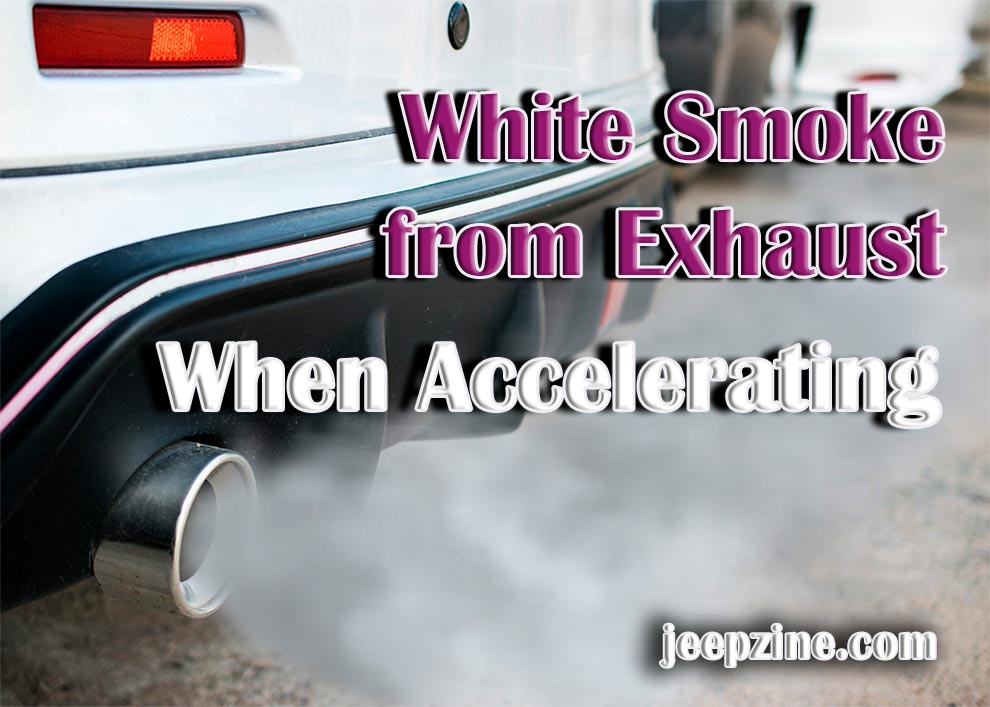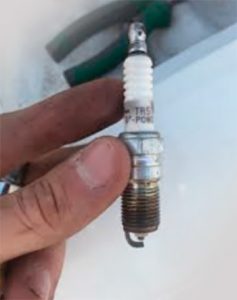What is white smoke? White smoke, also called cold smoke, is a low-temperature exhaust that can be caused by a number of problems with your car. There are many different causes of white smoke from the exhaust when accelerating. This article will discuss what causes white smoke and how to fix it!
What Does White Smoke from Exhaust Mean
White smoke coming from the tailpipe is a tell-tale sign that you have trouble in your combustion process. There are many reasons why this can occur and it’s important to identify which one(s) may be causing the problem so you can address them before they get worse. Here are some of the most common causes:
-
Fuel starvation – Fuel pump worn, clogged fuel filter or injectors not functioning properly due to buildup (usually caused by oil).
-
Engine overheating – Coolant leak, air leaks at intake manifold gasket, water pump failure or fan clutch/fan belt failure.
-
Ignition problems – Another potential culprit of white smoke from exhaust when accelerating is faulty spark plugs that are not sparking at optimal levels; they can also lead to rough idling and other problems related to ignition timing as well as misfiring in general. If there is any indication of these issues present, make sure to replace all four spark plugs in order for them to work more effectively together instead of just one or two being serviced while the others continue to misfire.
-
Emissions control problems – Catalytic converter failure, oxygen sensor failure or air pump malfunctioning due to buildup (usually caused by oil).
-
Exhaust gas recirculation valve failing because of dirty electrical connections, vacuum leak at the intake manifold gasket or exhaust gas recirculation solenoid-valve sticking open.
-
Air in engine oil system – Oil pressure sending unit faulty; improper installation of a mechanical fuel pump with no relief valve on high side; excessive blowby past piston rings and cylinders that has entered crankcase through PCV valves; defective low-pressure fuel pump diaphragm.
-
Fuel injector not functioning properly due to buildup from combustion deposits such as carbon and sooty substances.
-
Radiator fan not turning on when it should – Coolant temperature sending unit faulty; radiator control valve sticking open.
-
Problem with the air intake valve – which sits between the throttle body and cylinders in order to regulate how much oxygen reaches them at any given time. This system may need replacement if it malfunctions or leaks, as this will also lead to brownish black smoke coming through your tailpipe instead of just white, so you’ll want to address these issues right away for optimal performance and safety.
How to Prevent

Keep an eye out for leaks from anywhere on the air intake valve system – whether that is under tension (is cracking), clogged by debris, has corroded metal parts like screws etc., so you can address these issues right away and avoid having the problem escalate to brownish black smoke coming through your tailpipe.
If you experience any of these symptoms, it’s important that you get your vehicle serviced quickly in order to prevent more damage from occurring; once a certain level of neglect or wear is reached, repairs will be much costlier than if they were done sooner and there may also be other underlying problems not yet noticed like faulty wiring outside the engine compartment etc., which are difficult for amateurs to detect without an experienced mechanic on hand.


 Ignition problems – Another potential culprit of white smoke from exhaust when accelerating is faulty spark plugs that are not sparking at optimal levels; they can also lead to rough idling and other problems related to ignition timing as well as misfiring in general. If there is any indication of these issues present, make sure to replace all four spark plugs in order for them to work more effectively together instead of just one or two being serviced while the others continue to
Ignition problems – Another potential culprit of white smoke from exhaust when accelerating is faulty spark plugs that are not sparking at optimal levels; they can also lead to rough idling and other problems related to ignition timing as well as misfiring in general. If there is any indication of these issues present, make sure to replace all four spark plugs in order for them to work more effectively together instead of just one or two being serviced while the others continue to
Add Comment